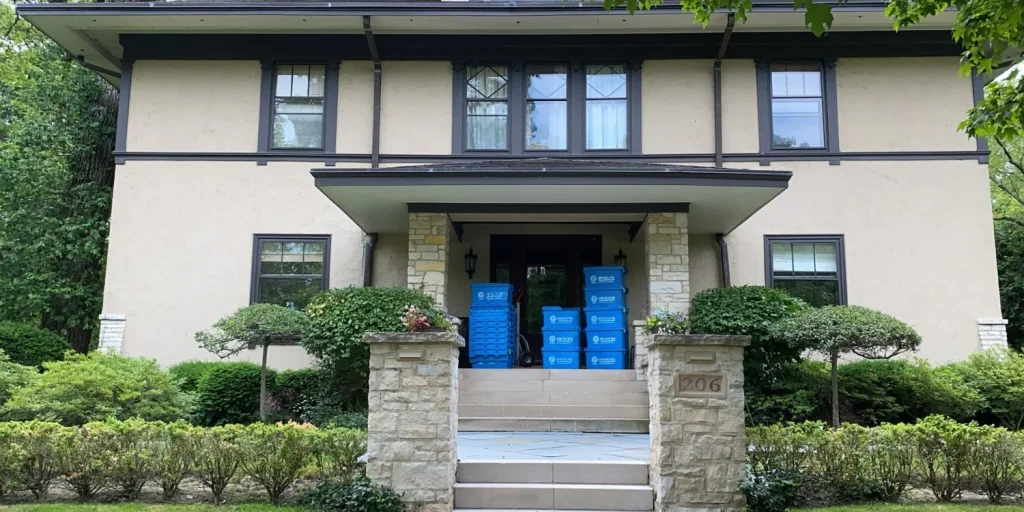When you’re planning to move one of the biggest questions is: how many boxes do I need? Packing for a house move can feel overwhelming but understanding the number of boxes you’ll need and the calculation process can make it much smoother. Here’s a simple guide to help you estimate how many boxes you should prepare for your move.
Factors That Affect the Number of Boxes Needed
The number of boxes required depends on a few key factors:
Size of Your Home
The bigger your house, the more items you likely have. A one-bedroom apartment will need fewer boxes than a three-bedroom house.
How Much Stuff You Have
Minimalists may need fewer boxes, while those who hold onto items for years (hello, sentimental keepsakes!) will need more.
Room Types
Kitchens typically need more boxes due to fragile items like plates, glasses and appliances. Bedrooms, on the other hand, might require fewer boxes unless you have a large wardrobe.
Type of Boxes Used
The size of your boxes also plays a role. Smaller boxes are ideal for books and heavier items, while larger boxes can hold lightweight things like pillows and blankets.
General Box Estimates by Home Size
Here’s a rough estimate of how many boxes you might need based on the size of your home:
| Home Size | Small Boxes | Medium Boxes | Large Boxes | Specialty Boxes |
| Studio/1-Bedroom Apartment | 10–15 | 7–10 | 5–7 | 2–3 (for TVs, etc.) |
| 2-Bedroom Home | 15–25 | 10–15 | 7–10 | 3–5 |
| 3-Bedroom Home | 25–35 | 15–25 | 10–15 | 5–7 |
| 4-Bedroom Home | 35–45 | 20–30 | 15–20 | 6–10 |
Note: These numbers are averages and can vary based on individual packing styles.
Room-by-Room Box Breakdown
Here’s an idea of how many boxes are typically needed for each room:
- Kitchen: 10–15 boxes (fragile items, small appliances, pantry supplies)
- Living Room: 5–10 boxes (decor, books, electronics)
- Bedrooms: 5–10 boxes per room (clothes, bedding, personal items)
- Bathrooms: 3–5 boxes (toiletries, towels, cleaning supplies)
- Garage/Basement: 5–10 boxes (tools, storage items)
Pro Tips to Make Packing Easier
Declutter Before You Pack
Go through your belongings and donate, sell, or discard items you no longer need. This will reduce the number of boxes required.
Choose the Right Boxes
Use sturdy boxes that match the weight of your items. Specialty boxes for fragile items or wardrobe boxes for clothes on hangers can save you time and stress.
Label Everything
Clearly label each box with its contents and the room it belongs in. This will make unpacking much easier.
Don’t Overpack Boxes
When packing boxes, avoid overloading them as this makes them too heavy and increases the risk of breaking. Fill boxes to about 75% capacity to keep them easy to lift and carry.
How to Calculate Boxes for Your Move
If you’re unsure about your box count, use this simple formula:
Number of rooms x 10–12 boxes = Total boxes needed.
For example, if you’re moving out of a 3-bedroom house:
3 rooms x 10–12 boxes = 30–36 boxes.
What If You Run Out of Boxes?
It’s always a good idea to rent moving boxes immediately, just in case. You can return unused boxes if you buy them from most moving supply stores.
Alternatively, check with local grocery stores, liquor stores, or friends who have recently moved—they might have extra boxes to spare.
Wrapped Up
Knowing how many boxes you need for a house move depends on your home’s size, the number of belongings you have, and the types of items you’re packing. Start with the general guidelines above, adjust based on your needs, and don’t forget to declutter to save space.
Happy packing!

